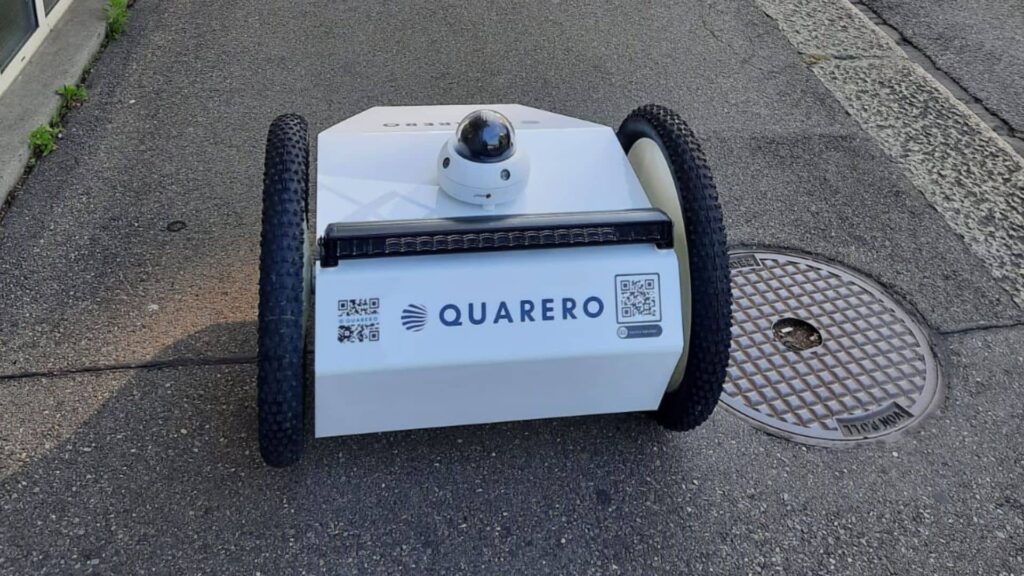Modern transit hubs—train stations, metro terminals, tram stops—are the lifelines of large cities. Every day, they manage tens of thousands of passengers, rushing schedules, and constant activity. Amid this pace, ensuring safety and security is a crucial yet complex task. Security robotics innovation has emerged as a powerful ally, offering smart, reliable solutions that complement traditional systems. Station surveillance robots, like the Quarero Stingray, blend technology, intelligence, and endurance to fill critical security gaps in busy transit environments.
🚆 The Transit Security Challenge
Transit stations present unique security demands:
-
High foot traffic with fluctuating density
-
Limited visibility in platforms, escalators, and entrances
-
Blind spots not covered by fixed cameras
-
Short-staffed overnight or during transitions between shifts
-
Vulnerable touchpoints—ticket kiosks, bag areas, access points
A single unattended bag or overlooked situation can cause serious disruption or worse. Even with CCTV and patrol teams, ensuring consistent coverage around the clock is difficult and expensive.
Why Surveillance Robots Make a Difference
Enter station surveillance robots, packing several transformative advantages:
-
Autonomous Patrols: Constant, uninterrupted monitoring without fatigue or breaks.
-
360° Vision: Wide-angle cameras and thermal imaging detect anomalies and track movement.
-
Real-Time Alerts: Instant notifications sent to control centers trigger faster responses.
-
Data Logging: Secure storage of patrol data that supports investigations and analysis.
-
Scalability: A fleet of robots can monitor multiple zones at once, spanning platforms and corridors.
By combining innovation and technology, these robots bridge the gaps left by human limitations and static systems.
Key Features That Make an Impact
Take the Quarero Stingray—an advanced security robotics platform designed to thrive in transit environments:
-
Continuous Patrols
After a full charge, Stingray can operate for 12–24 hours, eliminating coverage drop-offs due to shift changes or fatigue. -
Autonomous & Remote Mode
It navigates platforms and concourses independently, or can be manually controlled for sensitive situations. -
360° Camera Suite & Thermal Sensors
These sensors detect both visible and hidden threats: low-light visibility, abandoned items, or after-hour intruders. -
Obstacle Avoidance & Effective Mobility
With Lidar and ultrasonic sensors, the robot maneuvers around crowds, benches, carts, and maintenance equipment effortlessly. -
License Plate & ID Recognition
Detects loitering vehicles and unauthorized personnel—boosting security at parking zones and restricted areas. -
Self-Charging Capability
The Stingray docks between patrol cycles, ensuring uninterrupted, automated operation.
Real-World Use Cases
1. Platform Perimeter Checks
During off-peak hours, Stingray can patrol platform edges and entrances, triggering alerts for envelope breaches or roof access attempts.
2. Crowd Behavior Monitoring
At busy times, the robot analyzes crowd flow—flagging unusual gatherings, blocked exits, or suspicious patterns.
3. Parking and Ride-Share Zones
Equipped with license plate readers, it identifies repeat parkers or abandoned vehicles, enhancing lot security.
4. Escalator & Elevator Safety
By controlling access and watching psychological hot zones, it helps reduce accidents and unauthorized use.
5. After-Hours Surveillance
During lockdown or overnight closures, the Stingray fills gaps where human patrols are impractical and costly.
Benefits for Transit Authorities
-
Consistent Level of Vigilance
Robots don’t have shift changes. They deliver trusted, uniform oversight 24/7. -
Data-Driven Oversight
Analytics drawn from patrol logs help identify trends, plan staffing, and support security policy decisions. -
Cost Efficiency Over Time
While cameras and guards have limitations, robots reduce long-term costs through automation and lower labor expenses. -
Stronger Public Trust
Visible yet unobtrusive patrol robots reassure passengers and deter potential threats before incidents occur.
Shaping the Future of Transit Security
The evolution of station surveillance robots marks a major step forward in how cities approach transit security:
-
Swarm Monitoring: Multiple units covering larger stations or entire transit networks.
-
Edge Detection: Integrating with alarm and access control systems for immediate lock-down responses.
-
Predictive Analytics: Using AI to forecast threats based on historical station data and anomalies.
-
Human–Robot Co-Workforces: Where patrol teams are supported by robots that handle routine tasks, freeing officers to focus on investigations or direct interaction.
Final Thoughts
In the fast-paced environment of transit stations, security must be dynamic, alert, and reliable. Station surveillance robots bring security innovation to the forefront—combining robotics and technology to manage crowds, monitor risk zones, and protect public spaces with minimal human resources.
The Quarero Stingray demonstrates how effective security robotics can be in transit environments—raising the bar on protection, efficiency, and public trust.
📩 Want to explore how Stingray can elevate security at your station or facility?
📧 Email: info@quarerorobotics.com
🌐 Learn more: www.quarerorobotics.com
The post Station Surveillance Robots first appeared on Presslink Media.

